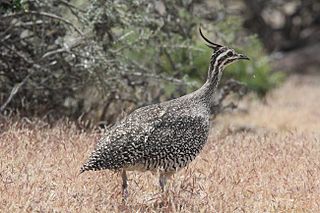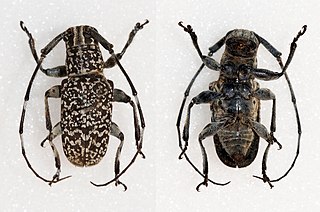Related Research Articles

Caenorhabditis elegans is a free-living transparent nematode about 1 mm in length that lives in temperate soil environments. It is the type species of its genus. The name is a blend of the Greek caeno- (recent), rhabditis (rod-like) and Latin elegans (elegant). In 1900, Maupas initially named it Rhabditides elegans. Osche placed it in the subgenus Caenorhabditis in 1952, and in 1955, Dougherty raised Caenorhabditis to the status of genus.

True Love is an album by Toots & the Maytals. It is a collection of their classics re-recorded with guest artists including Willie Nelson, Eric Clapton, Jeff Beck, Trey Anastasio, No Doubt, Ben Harper, Bonnie Raitt, Manu Chao, The Roots, Ryan Adams, Keith Richards, and The Skatalites. The album was produced and conceived by Richard Feldman and released on the V2 label.
Daniele Cacia is an Italian professional footballer who plays as a striker. He is a former Italy Under 19 international.

Eudromia is a genus of birds in the tinamou family. This genus comprises two crested members of this South American family.

Lucas Alberto Simón García is an Argentine naturalized Chilean professional footballer who currently plays for Trasandino in the Segunda División Profesional de Chile as a striker.
Cacia is a civil parish in the municipality of Aveiro. The population in 2011 was 7,354, in an area of 35.75 km².

Mesosini is a tribe of longhorn beetles of the subfamily Lamiinae.
C. elegans most commonly refers to the model round worm Caenorhabditis elegans. It may also refer to any of the species below. They are listed, first in taxonomic order and, second, alphabetically.

Cacia is a genus of longhorn beetles of the subfamily Lamiinae.
Cacia is a civil parish in Aveiro Municipality, Portugal.
Cacia guttata is a species of beetle in the family Cerambycidae. It was described by Per Olof Christopher Aurivillius in 1927. It is known from Java and Moluccas.
Cacia inculta is a species of beetle in the family Cerambycidae. It was described by Francis Polkinghorne Pascoe in 1857.
Cacia bioculata is a species of beetle in the family Cerambycidae. It was described by Heller in 1923. It is known from the Philippines.
Cacia butuana is a species of beetle in the family Cerambycidae. It was described by Heller in 1923.

Cacia vermiculata is a species of beetle in the family Cerambycidae. It was described by Heller in 1923. It is known from the Philippines.
Cacia subfasciata is a species of beetle in the family Cerambycidae. It was described by Schwarzer in 1930. It is known from Sumatra and Java.
Cacia semiluctuosa is a species of beetle in the family Cerambycidae. It was described by Blanchard in 1853.

Cacia cretifera is a species of beetle in the family Cerambycidae. It was described by Frederick William Hope in 1831. It is known from Java, Cambodia, India, Myanmar, China, Nepal, Thailand, Laos, and Vietnam. It feeds on Berberis thunbergii and Albizia julibrissin.

Bauruemys is an extinct genus of turtles in the family Podocnemididae.

Ramal do Porto de Aveiro is a railway branch in Portugal which connects the cargo terminal of Cacia to the Port of Aveiro. It was opened in March 2010.
References
- ↑ BREUNING Stephan (1939) Études sur les Lamiaires (Coléop. Cerambycidæ). Huitième tribu : Mesosini Thomson, Novitates Entomologicæ, 3ème supplément (50-66): 393-526, figs 510-521